Whether it’s a dreary, morning commute or a wind-in-your-hair sunset cruise, a car ride just isn’t the same in silence. It’s this universal appetite for good listening where car radio history begins.
Vehicle audio has been around in one form or another for nearly as long as there have been automobiles on the road. Initially, car owners would take portable battery radios on their journey. It wouldn’t take long for a superior option to arrive on the scene thanks to a now-famous company that was just trying to stay afloat during its nascent stage.
1930: The First Car Radio
In 1928, brothers Paul and Joseph Galvin founded the Galvin Manufacturing Corporation. The company produced battery eliminators, devices that enabled battery-powered radios to operate on household electric current. As more radios began running through home electrical systems, however, battery eliminators became obsolete.
Coupled with the financial effects of the Great Depression, the Galvins needed a new product to stay in business.
The brothers recruited a group of engineers to build a radio that could be installed in automobiles. Putting various parts inside the car and others underneath the floor, the crew successfully manufactured a sturdy radio that received a clear signal and could withstand rough roads.
Paul Galvin unveiled the device in grand fashion, driving from Chicago to Atlantic City to demonstrate the radio at the 1930 Radio Manufacturers Association Convention. Unregistered for the event and without a booth, Galvin parked the car outside and turned up the radio’s volume. The stunt drew hordes of spectators and by the time he left Atlantic City, Galvin had secured enough sales to keep his company in business.
But what would they call this new technology? Wanting a unique name for its product, the Galvin Corporation combined “motor” from motorcar with “ola” from Victrola (a popular line of phonographs) to create Motorola. The moniker quickly became so well-known, the company changed its name to Motorola, Inc.
1953: The Groundbreaking Becker Mexico
Technological advancements over the following two decades spurred improvements to the size and functionality of car radios. In 1953, the Becker company reached a major milestone in car-radio history when it unveiled its now-legendary Mexico model. Arguably the first high-end car radio, the Becker Mexico featured FM stereo and was the first in-car radio with a fully automatic station scan.
1955: Chrysler’s In-Car Record Player
Through the mid-1950s, drivers were at the mercy of radio stations when it came to musical choices. That began to change when Chrysler unveiled a car record player known as the Highway Hi-Fi. It was developed by Peter Goldmark, head of CBS Laboratories, who had previously invented the 33 1/3 Long-Playing (LP) record. The system was mounted underneath the dashboard and would project forward with the push of a button.
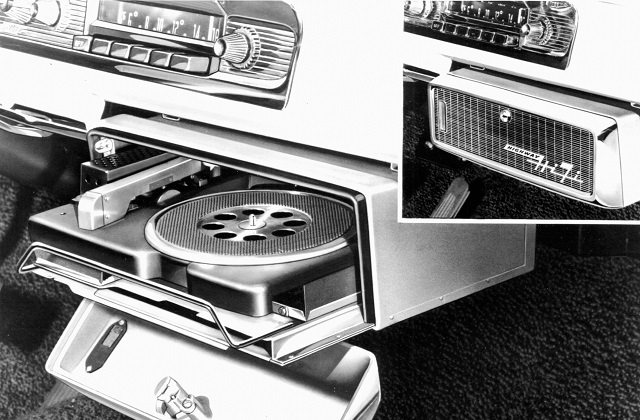
Because 12-inch, 33⅓-rpm records were too big, and smaller, 45-rpm records played just one song, Goldmark needed a new format. He developed a record with groove spacing one-third the width of an LP. Combined with a slower turntable, this allowed these new records to be just 7-inches wide, yet play the same amount of music as a 12-inch LP.
Goldmark tested the system in his own Chrysler with great results. His bosses were less than enthused with the ingenuity, however, believing in-car record players would steer listeners away from CBS-owned radio stations.
Undeterred, Goldmark went straight to the car manufacturer. He successfully sold the idea to Chrysler, which offered the Highway Hi-Fi as an add-on to several of its 1956 models. While noble in its intention, the record player ultimately proved more problematic than its worth.
It came with six propriety records, none of which were major hits. They included the soundtrack to “The Pajama Game” musical, Tchaikovsky’s “Symphony in B Minor” and songs from Walt Disney’s “Davy Crockett.” If customers wanted more options, they had to purchase new records. Even then, they could only choose from a small subset of Columbia Records’ catalog. (Columbia was the only company producing the 7-inch records.)
The biggest issue with the Highway Hi-Fi, however, was its functionality. Goldmark had gone to great lengths to ensure records wouldn’t skip as the car drove, performing numerous tests on premium Chrysler models. But the carmaker also offered the record player on lower-end Dodges and Plymouths, which had inferior suspension systems. This caused the records to skip and the warranty claims to mount. Combined with the device’s high price (more than $2,000 today), these drawbacks ultimately doomed the Highway Hi-Fi. It was discontinued just a few years later.
1960s-70s: Eight Tracks and Cassettes
The in-car record player was down but not out. In 1960, Chrysler replaced the Highway Hi-Fi with the RCA Victrola turntable. The device held a total of 14 singles that would play one after another. The UK’s Auto Mignon was a more compact record player, though it only held one 45-rpm record at a time.
Before the in-car record player could be perfected, Ford and Motorola jointly introduced the eight-track tape player in 1965. It remained the go-to choice for car audio throughout much of the 1970s.
Cassette tapes, which were initially developed in 1963, began supplanting eight-track players in the late 1970s as tape quality improved. They would remain extremely popular, both in and out of cars, through the 1980s.
1984: Compact Discs
Compact disc players made their way into cars in the 1980s. The first was the Pioneer CDX-1, introduced in 1984. Lincoln offered the earliest factory-installed player in its 1987 Town Car model.
This new technology offered a far-better listening experience than any previous option. CDs had vastly superior sound quality and were more durable than cassettes. Plus, listeners could instantly skip tracks with the push of a button instead of rewinding or fast-forwarding. Car CD players became ubiquitous by the 1990s.
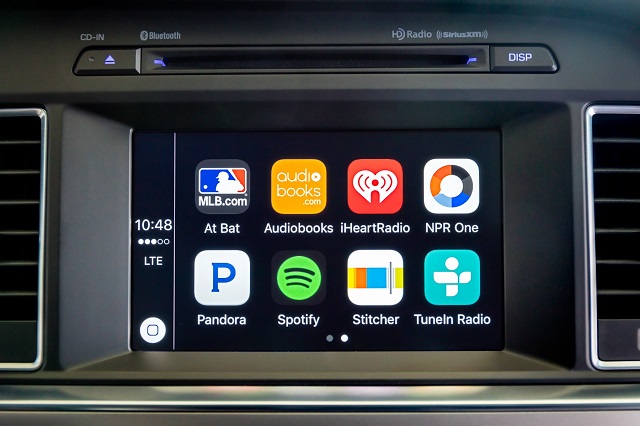
2000s: The Brave New World of Car Radios
Many new chapters have already been written in car-radio history this century. Through the use of USB, auxiliary cords and Bluetooth, drivers started connecting their mobile devices to car radios beginning in the early 2000s. Nowadays, most cars allow drivers to sync their phones to the car radio via Apple CarPlay and Android Auto. These apps give users hands-free access to their music, as well as streaming services like Pandora and Spotify.
The 2000s also introduced the world to satellite radio. As opposed to terrestrial radio, which has a limited signal range, satellite radio can broadcast over an entire continent with crystal-clear clarity. This feature has made it a popular option for car listening.
What’s your favorite car radio memory? Where will car audio tech go next? Let us know in the comments below!
If car radio history has whet your appetite, head to our auto history section for more stories on automotive evolution.
26 Thoughts on “A Timeline of Car Radio History”
Leave A Comment
Comments are subject to moderation and may or may not be published at the editor’s discretion. Only comments that are relevant to the article and add value to the Your AAA community will be considered. Comments may be edited for clarity and length.




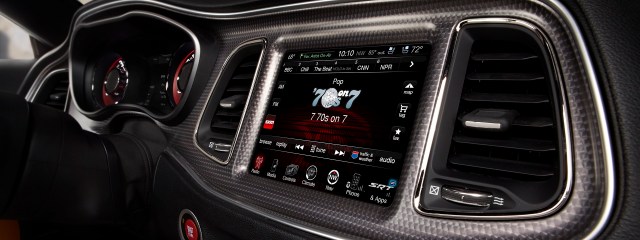

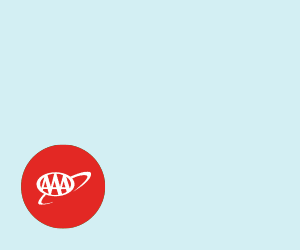





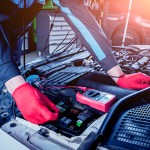


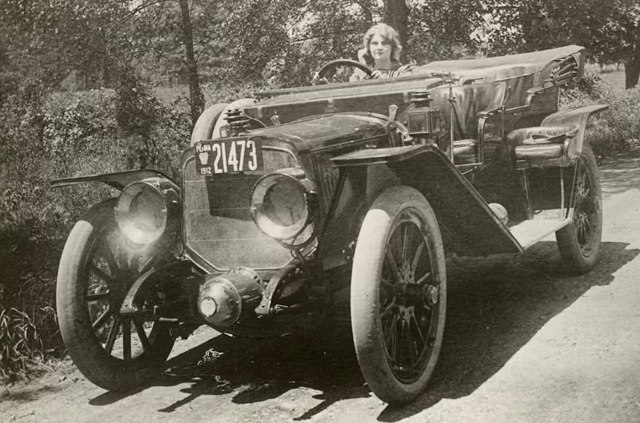

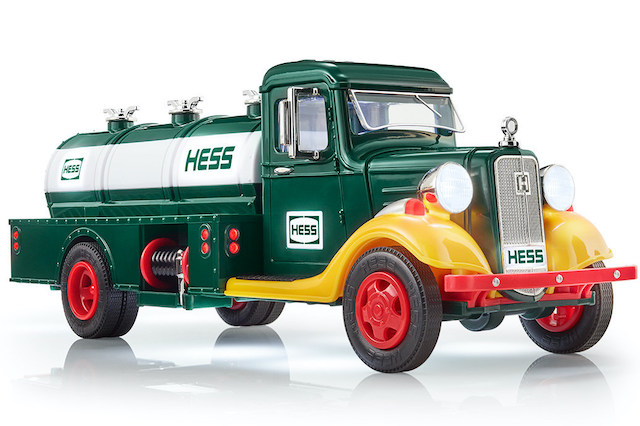

My earliest car radio memory was when I was a little kid in the early 50’s.
My mother loved the song “Indian Love Call” a duet by Nelson Eddy and Jeanette McDonald.
Whenever it came on she would hush my sister and I up and “pump up the volume”..
To this day that song brings back memories of our mom.
My first car was a 1962 Corvair. I did not get a factory radio installed. I went to a dealer and had one of the first auto FM radios, made by Motorola, installed. It sounded really good on long rides between New York and Boston.
One piece of history, not mentioned, was as the factory installed radios got better, they were frequently stolen from car. I had one in an Audi Fox that was broken into while parked at a movie theater lot. This happened so often with BMW cars that BMW stood for “Break My Window”. Now , of course, that rarely happens with the integrated “infotainment” systems
Most 60’s cars had AM only radios. The AM radio signals would fade in and out depending on weather, structures and lacking signal strength. Going under bridges and passing through tunnels blocked and disrupted the music.
FM came along and eliminated the problems associated with AM. Real stereo only came from FM signals so you had to either add a separate tuner or replace your radio.
The 8 track tape player was the option to hear HIFI Stereo music like you would have on your home. It only played music forward and you had to play the whole track to hear a song again!
Then the cassette recorder became popular because it allowed you to record your own song choices or buy a cassette instead of a vinyl record.
You could fast forward or rewind to choose a particular song.
The Sony Walkman took this format into the portable market that became CD then the I Pod …
Thank you for a most interesting article. One minor error refers to the Becker FM radio. While it may have been introduced in 1953, FM stereo was not launched until early 1961. Another incomplete statement relates to the 8 track player. No mention is made of Bill Lear, of Lear Jet fame, who led an automotive consortium to introduce the format in 1964.
I always had an 8 track player in my cars
Working at a TV/Radio repair shop in CT in the late1950’s as a part-time after school job, I spent many hours upside down under dashboards replacing vibrators and buffer condensers in tube-based AM radios. The transitor was just being introduced on portable radios, but hadn’t yet made it to many cars. A very common repair.
I had a 1970 Gremlin with only an AM radio. I had a Wollensak reel-to-reel tape recorder that had its own speakers. I put it in the back seat and borrowed an inverter (converts DC to AC) from a friend. I hooked the inverted to the car battery, but then found that when I accelerated, the tape sped up, and when I slowed down, so did the tape. After some research, I discovered that I needed an inverter with frequency control. I bought one, and it worked great. I had dozens of tapes and kept my little system running until I sold the car in 1979.
always have my radio on in the car .. my favorite is Siriusxm with Howard Stern on the dial 24/7. The fact that we have satellite radio in our cars is genius .. Long live the King of All media
You must be Mariann from Brooklyn! What a pleasure. I’ve listened (and re-listened) to every moment of Howard since 1985, not an easy feat given the limitations of FM and tape decks until the digital and satellite days circa 2006. Sadly, I just pinpointed the day he jumped the shark and started the slow decline into the current opposite of what was the world’s greatest entertainment show – December 12, 2002 cancelling his usual Caribbean Christmas vacation to adopt an unmanly English Bulldog named Bianca.
Enjoyable article but expected much more on the Tape era since most of us lived & experienced it firsthand. Highway Hi-Fi? How could 7 proprietary records ever caught on?
And a big, big chunk of us know the anguish of being upside down under the dash for hours replacing the factory radio, tape decks and speakers of every cruddy first set of cars we were lucky to get our hands on as teenagers and college students…
Around 1990 audio playback was at a crossroads with many competing formats involved. Cassettes were most popular, with CD’s ever climbing. Also on the horizon were MiniDisc (a Sony innovation), DAT (Digital Audio Tape) and DCC (Digital Compact Cassette). How i handled this uncertainty was to buy and install a car stereo that had a mini phone plug input jack on the face. What that allowed me to do was to attach any player to it that had a headphone jack by using a simple patch cord with a mini plug on each end. It would still be useful now, thirty years later. If my present car had such a jack i could see myself using it with older technology like a cassette player or CD player, but it would also be a great pair with my iPod that has my entire music collection of about 800 CD’s on it.
I think the Delco radio should get honorable mention. It was standard GM equipment for decades. And it sounded quite good too.
My first car was given to me by a family friend and was a 1960 Ford Falcon with a “standard A/M” radio. Big thrill was buying and installing an F/M tuner that plugged into the back of same and allowed you to get many more stations/music. We lived in Connecticut but WINS (New York) with Murray the K and his swingin’ soireé, Cousin Brucie, and “The Hound” on late night were the premiere music DJ’s.
2 thumbs up, just move the action to the Jersey Shore with a 1962 Dodge Lancer. And don’t forget the “Good Guys” on WMCA.
My first car I bought used from a friend was a 1957 Pontiac. I don’t even recall if it had a radio. However, in 1960 I took a job where I was given a car, a brand new 1960 Chevrolet, perhaps a Bel Air or Biscayne which didn’t have a radio. I used a small transistor radio I owned which had a jack into which I inserted a cable attached to a small speaker which I placed on the rear window deck. Those were the days.
The car also didn’t have power steering or air conditioning among other amenities.
i remember repairing just about all of the early and then the latest up until digital then i just installed them
Thank you for a fun history.
I have a photo of Col. Ned Green c 1922 with a radio in/on his 2 seat roadster. The photo was taken at Round Hill in Dartmouth MA, where he had one of the first radio stations to broadcast in the region.
Coming of age in the 70’s, I remember my older brother installing an 8-track player in his VW Beetle which only had an AM/FM radio. Whether we were cruising listening to “In-a-Gadda_Da_Vida” or “Tommy” or any LP with long tracks there would be times when a great track would be interrupted by the need to change tracks because each of the 4 “sides” (8 tracks/2 tracks for stereo) had to be the same. That still “Makes Me Smile” (with homage to part of Chicago II medley that would be broken up too!) to this day!
I remember that well. Rush “2112”, Lynyrd Skynyrd “Free Bird”, Outlaws “Green Grass & High Times” would do that too. And how ridiculous was it as the music company’s recorded songs slowly went silent then slowly back up to full volume at the “change” wasting 15 seconds of song. If you made your own 8 track tape (yes they existed, LP to 8 track recorders), the “change” was over in a split second. Random memories that stick…
I’ve lived through all of these changes. Well, not the record player (and was initially aware of that, reading Keith Richards book – he had one in his car). Remember the face you had to take off your in-dash radio to prevent the stealing of your hi-end (at the time) radio/cassette player? That’s how you got around the theft. The device was useless without the front face (that you took with you), ending the “industry” of car radio theft.
I remember installing a radio in my 50s Plymouth. Lying upside down with both hands under the dash, my i.d. bracelet shorted out bare wires, scaring the heck out of me and leaving me with numerous cuts and abrasions, when trying to quickly extricate myself. Ah, memories!
Unfortunately your history isn’t quite that accurate. There was a company based in Ma. that was started in1920 named Automatic Radio which has been argued made the first practical automobile radio in the 20’s and was one of the leading car radio/tape player companies in the world. I should know, the founder of this company was my grandfather.
https://www.radiomuseum.org/dsp_hersteller_detail.cfm?company_id=1932
Growing up in Peru in the 70s and early 80s aftermarket car stereos were everything. We mostly had VW beetles and would install Pioneer KP500 with Jensen speakers. The unit had to be removable because of theft and the speakers were placed on a plank on the luggage compartment behind the rear seat, which created a massive sound. We made mix-tapes and I particularly remember how great “love action” by the human league sounded. Great memories
I remember installing a reverb unit to the radio in my father’s Renault Dophine and listening and listening to Murray the K on reverb!